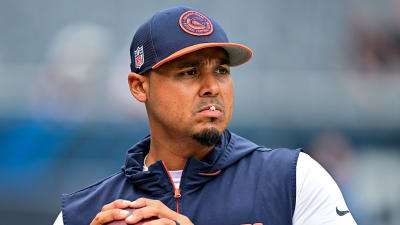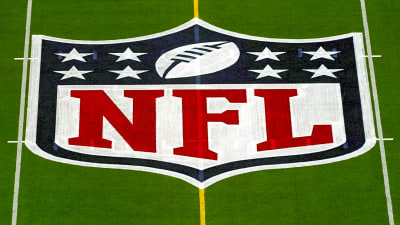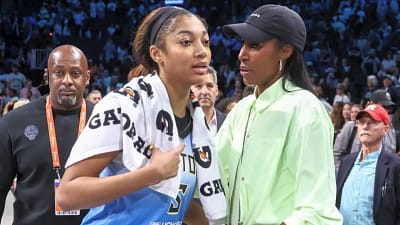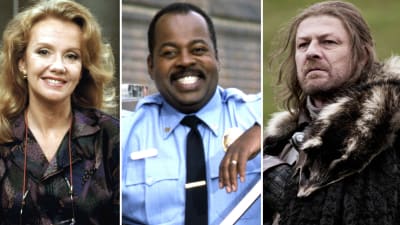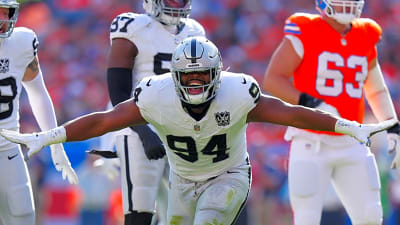Seeing Zach Gowen appear on AEW Collision was more than nostalgic. It was heart-warming that after over twenty years, Gowen’s first appearance on a major wrestling program mirrors his past.
It wasn’t the first time Gowen’s prosthetic leg had been ripped off. Although unlike “Rowdy” Roddy Piper, Ricochet grabbed the right (as in the false) leg. Yet what differs is where Gowen is in his life. The change is obvious. Older, healthy, and happy. Sat with his children, ringside, and when cutting a backstage promo to promote his Dynamite Beach Break match against one of AEW’s hottest heels.
The confidence, assurance, and sense of fulfilment in Gowen’s body language and words are real. Contrasted to the nineteen-year-old “kid” in WWE, who struggled on and off-screen with the pressure and stardom at such a young age, this feels like a narrative happy ending.
A full circle moment. AEW facilitates a story that captures both fiction and reality and allows for character redemption. The match might be a squash, but that doesn’t matter. What matters is seeing Gowen as more than “the one-legged wrestler”.
The Dream
I became a wrestling fan as a teenager in 2003, watching WWE SmackDown! The action and characters grabbed me. Wrestlers like Kurt Angle, Eddie Guerrero, and Rey Mysterio seemed superhuman and God-like. Then there was Zach Gowen. A skinny, pale 19-year-old kid. A cancer survivor with one leg who fought for his dream of becoming a WWE wrestler. This young man sought a place as a peer amidst these near-supernatural athletes.
For me, the storyline was about more than the American Dream. Symbolic in Gowen’s backstory with Hulk Hogan and the support of Mr America. Gowen’s desire to become a WWE wrestler was also about overcoming prejudice and discrimination. With one leg to stand on, Gowen embodied the hopes and dreams of folks who were disabled and felt less than.
Gowen was nineteen, and I was thirteen. I was pale and skinny, with partial deafness and undiagnosed dyslexia, and I felt different and defective. Less than because of what I lacked.
Seeing someone like Gowen, who had to overcome such horrific childhood experiences, cancer, and losing his leg, persevere and not give up, was motivational and inspiring.
It helped me consider how you can find a way around your physical limitations. Those difficulties don’t completely define you. Such is the power of a great story in any medium. It was Hollywood.
The fiction portrayed the American Dream as accessible and achievable to all, at least until the story arc ended.
Rushed
In hindsight, the power and novelty of Gowen’s story glossed over the creative cracks in his introduction. Gowen was signed with less than a year’s experience in wrestling.
In a move not too dissimilar to today, with AEW, WWE signed Gowen after he made a handful of appearances for TNA Wrestling, which had fans talking. Although infamously, John Laurinaitis signed the wrong one-legged wrestler, Steve Chamberland.
Once signed, WWE vetoed Gowen’s desire to go to development. The company wanted to keep their new signing and his uniqueness a surprise. Gowen waited for months for his debut, which was reportedly rushed into existence when WWE Magazine was set to publish a story about Gowen before his debut.
Added to the feud between Vince McMahon and Mr America, Gowen became a supporting character in the soap opera storyline. Yet, Gowen stood out physically and in confidence among the veterans and legendary figures in the feud. Gowen’s presentation was limited to a mascot for Mr America and a means of getting heat.
Exploited and manipulated in backstage segments by Sable (who herself was commodified like other women of the era) under McMahon’s orders.
Gowen became central to the storyline once Roddy Piper and Hogan abruptly left WWE, with Stephanie McMahon stepping in to support Gowen. Gowen’s first match saw him and Stephanie McMahon defeat The Big Show to win Gowen a WWE contract. Assistance came from a steel chair, Brock Lesnar, and Kurt Angle, but regardless, it was a huge cathartic moment.
With that arc complete, Gowen fell from underdog to punching bag. Brutally destroyed by Brock Lesnar in front of his hometown and his mother. Weeks later, Gowen would be shoved in a wheelchair down a flight of stairs. Then later battered by Matt Hardy.
Double-Edged Sword
Gowen’s time in WWE was a double-edged sword. Life-changing, moving, and memorable, yet mired by a lack of short-term planning and personal struggles. Creatively, Gowen felt rushed into the spotlight as a novelty act. As a character on screen, Gowen was defined by his disability, which made him simultaneously a brave hero and a defenceless victim, a paper-thin portrayal of disability.
Gowen’s final WWE match was a PPV victory over Matt Hardy at No Mercy. Gowen’s only clean WWE victory. Behind the scenes, Gowen struggled with life on the road. Becoming dependent on alcohol and painkillers and gaining heat for his ego, Gowen struggled. It was too much, too fast, too young. Gowen was released after refusing to go to developmental. On Insights with Chris Van Vliet, Gowen recalled:
“I didn’t have the wherewithal … or the emotional maturity, the self-control, or the foundation to be able to handle the gift that I’d received. It was beyond my ability to just be a human being, or to be a wrestler, or to be someone responsible. … And it wasn’t so much the drugs and the alcohol at that time, it was the inability just to be a productive member of a team. The inability to conduct myself as a representative of a worldwide billion-dollar company. I didn’t have the tools to do it.” Zach Gowen, Transcript from WrestleInc.
Recovery and Redemption
Gowen returned to the indies, but his reputation suffered due to his addiction and behaviour. Support would later come from the WWE Wellness Program to find sobriety. Gowen’s last drink was in February 2010. Unlike some of Gowen’s peers and predecessors, he was able to turn his life around.
On the independent scene, Gowen would go on to compete for ROH, JCW, and other promotions. A documentary by Kenny Johnson in 2015 shined a spotlight on Gowen’s tag team with Gregory Irons, who has Cerebral Palsy, The Handicap Heroes. Gowen called teaming with Irons the most successful, satisfying, and gratifying part of his career. Irons is one of many physically disabled wrestlers whom Gowen helped inspire.
In those few minutes on Collision, AEW presented Gowen as more than a disabled wrestler. The name graphic highlights how Gowen is a successful motivational speaker. Flanked by his children, Gowen is a father. Like fans from 2003, he’s grown up and matured. Yes, the story centred on Ricochet stealing Gowen’s leg for heat.
However, Gowen’s promo, his discussion of adversity, made it clear he is more than a one-legged wrestler. He’s a man standing up to a bully who wants to show his kids what’s right from wrong.
His disability and story are a large part of him, but it’s not the whole human being. On Wednesday night, Gowen gets to rewrite how we remember him, whether he wins or loses.
More must-reads:
- Cause of death revealed for Hulk Hogan
- Kirk Cousins makes notable leadership move after Falcons practice
- The 'MLB mascot names' quiz
Breaking News
Trending News
Customize Your Newsletter
 +
+
Get the latest news and rumors, customized to your favorite sports and teams. Emailed daily. Always free!
